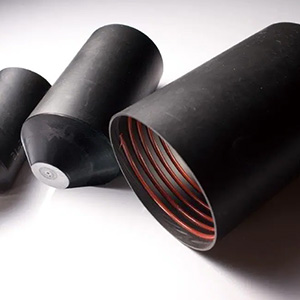 Heat shrink caps are small, protective enclosures made of heat-shrinkable plastic or polymer material. They are designed to cover and insulate the ends of wires, cables, or tubes, providing protection against environmental factors such as moisture, dust, and corrosion. These caps are commonly used in electrical, automotive, and industrial applications to ensure secure and durable terminations.
Heat shrink caps are small, protective enclosures made of heat-shrinkable plastic or polymer material. They are designed to cover and insulate the ends of wires, cables, or tubes, providing protection against environmental factors such as moisture, dust, and corrosion. These caps are commonly used in electrical, automotive, and industrial applications to ensure secure and durable terminations.
Working Mechanism of Heat Shrink Caps
- Placement – The heat shrink cap is placed over the exposed end of a wire, connector, or tubing that requires insulation and protection.
- Application of Heat – Using a heat source such as a heat gun, torch, or even an oven in industrial settings, heat is applied to the cap. The temperature required depends on the material, typically ranging from 90°C to 250°C.
- Shrinking Process – As the cap is heated, it contracts or “shrinks” to fit tightly around the wire or component, forming a snug and secure seal. This occurs due to the polymer’s molecular memory, which causes it to return to its pre-expanded shape when exposed to heat.
- Cooling and Solidification – Once the cap has fully shrunk, it cools and hardens, maintaining its shape and firmly gripping the covered component. Some heat shrink caps contain an inner adhesive lining that melts during heating, creating a waterproof and airtight seal when cooled.
Benefits of Heat Shrink Caps
- Electrical Insulation – Protects exposed wire ends and prevents short circuits.
- Environmental Protection – Shields against moisture, dust, chemicals, and UV exposure.
- Mechanical Durability – Provides strain relief, reducing wear and tear on cable ends.
- Custom Fit – Shrinks precisely to fit various wire and connector sizes.
Heat shrink caps are an essential component in electrical wiring, automotive repairs, and industrial applications, ensuring long-lasting protection and reliability.


